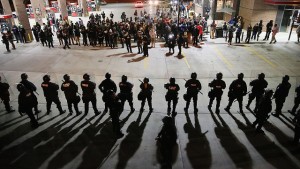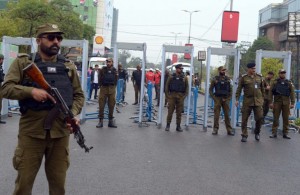Designing Police Reforms
and the latest police reforms in the United States
Kamran Adil
Introduction
Designing police reforms is a challenge. More often than not, the tendency is to appoint a group of people claiming to have know-how and experience in dealing with police matters with predefined terms of reference (ToRs); the group then locks itself within the parameters drawn by the ToRs. This approach has not worked very well as the reform design shaped by the predefined ToRs takes away much of the initiative and nudges the group in a particular direction. In case of Pakistan, over two dozen police reforms committees/commissions/bodies worked within this framework and proposed changes, but the debate over the reform design has seldom been undertaken. Presently, the same situation is being faced by the United States where everyone has his own reform design for police. The range of variety of this reform menu is from defunding police to tightening the accountability gaps to reversing the case law on the subject of personal liability of a police officer. This write-up will briefly examine the range of approaches being taken in the United States to reform the police and will try to briefly analyze how important is the reform design debate in the context of Pakistan.
US Police Reform
The array of options for police reforms being considered by the United States lately are:
- Task Force on 21st-century Policing
The killing of George Floyd was not a first-of-its-kind event in the United States; rather there has been a systemic pattern that was largely ignored by the policymakers. More lately, in August 2014, Michael Brown, a black man, was killed by Darren Wilson of the Ferguson Police Department in the state of Missouri. The killing resulted in widespread protests. Barack H. Obama, the then-US President, established the President’s Task Force for 21st Century Policing through an executive order (EO. No. 13684/2014). Despite the bombastic title of the Task Force, its stated mission was relatively narrow and abstract. The mission required the Task Force to ‘identify best practices and otherwise make recommendations on how policing practices can promote effective crime reduction while building public trust’. The Task Force, in its report, identified eight pillars and made specific recommendations with regards to each pillar separately. The focus of the report was on ‘trust’ aspect of policing, and on ‘demilitarization’ of police forces. The report mainly touched on value portion of the police reforms and its actual implementation was to be done by the states/federating units as the federal government had little mandate to directly reform the police under the US constitution. It does, however, try to shape the reforms by controlling federal funding stream as introduced by the law (Violent Crime Control and Law Enforcement Act of 1994), introduced by Joe Biden, the now forerunner democratic candidate for the upcoming US presidential election. Obviously, given the limited role of the federal government in the matter, the outcome of the Task Force remained limited and the practice of abuse of power continued leading to many similar instances, including George Floyd’s case which again captured the attention of the whole country in the 2020 and this time, the global media also picked it up more fervently.
- Safe Policing for Safe Communities
The current US President, Donald Trump, in response to the protests with regards to excessive use of force in George Floyd’s case – in his least caring style – issued an executive order (EO. No. 13929/20) that focused on the use of force by police. The order requires the US Attorney General (AG) to certify independent credentialing bodies that could then review policies regarding the use of force and de-escalation techniques. The order requires the AG also to engage the community and to incentivize the federal grants to police organizations to spur implementation of standards set by credential bodies on the use of force. The order also requires establishing of a database of law-enforcement officers on their terminations/decertification, criminal convictions for on-duty conduct and civil judgements against them. The order focuses on the individual police officer instead of on the ecology and police culture in which he operates.
- Legislative Initiatives
In addition to executive order by the US President, different legislative moves have also been made. Democrats moved a bill titled as ‘Justice in Policing Act, 2020’ (JPA). The JPA’s main features are:
(a) It intends to introduce a registry of police misconduct complaints and disciplinary actions.
(b) It aims to create an independent process to investigate misconduct.
(c) It requires technology to be used on duty in form of body-worn cameras, dashboard cameras on cars, and establishing online real-time databases to measure the extent of the problem of abuse of police power.
The draft law prohibits chokeholds/carotid holds and transfer of military equipment to police. The law is not likely to pass, and is gridlocked.
Another such legislative initiative is the draft Law Enforcement Trust and Integrity Act, 2020 (LETIA) which proposes to establish national policing standards and accreditations and their sharing through database. It also proposes to link federal funding to police agencies with implementation of national policing standards. Another initiative is the introduction of the Elimination of Qualified Immunity Act, 2020 (EQIA) that is aimed at doing away with the defence of Qualified Immunity that got introduced in the US law through a US Supreme Court judgement in Harlow v. Fitzgerald, in which, the actions of police officers were shielded at a threshold of reasonableness, a notch above the classical bona fide act doctrine.
The ‘defunding police’ sloganeering continued for sometime after George Floyd’s death. It was an emotional reaction with roots in the work of Alex Vitale who wrote ‘End of Policing’ arguing to divest police and to taken non-crime approaches in the society. The sloganeering gradually died down as many argued it to be totally wrong and unsustainable. Conversely, there were many voices to invest more in police to improve their ecology and police culture.
- Designing Police Reforms in Pakistan
The case of designing police reforms for Pakistan has been equally challenging. Every commission/committee/institution tasked with the reforms has taken its own approach. From the design perspective, the police reforms have predominantly been designed to achieve a progressive legal framework by getting the colonial police law (the Police Act, 1861) substituted with a progressive and modern police law (the Police Order, 2002). The Police Reforms Committee Report, 2019, that was constituted on the order of the Supreme Court of Pakistan introduced the urban policing as a full-fledged term of reference, thus leading to widening of the design to include urban policing.
Another dimension that is largely shaping police reforms is the impact of information technology and how to internalize it with intrinsically legalistic processes of police working. In the post-Covid-19 world, the community and policing dimension have further been expanded. Finally, the dimension of democratic security has also been suggested by some to be part of police reforms design. The concept of design, it may be noted, is not static and keeps on evolving within the larger framework of the constitutional system of the country. For Pakistan, the police reforms in the US have as, once again, reaffirmed the importance of cooperative federalism, which can bring criminal law and its subset of policing as a shared responsibility of the federation and the provinces.
 Jahangir's World Times First Comprehensive Magazine for students/teachers of competitive exams and general readers as well.
Jahangir's World Times First Comprehensive Magazine for students/teachers of competitive exams and general readers as well.




